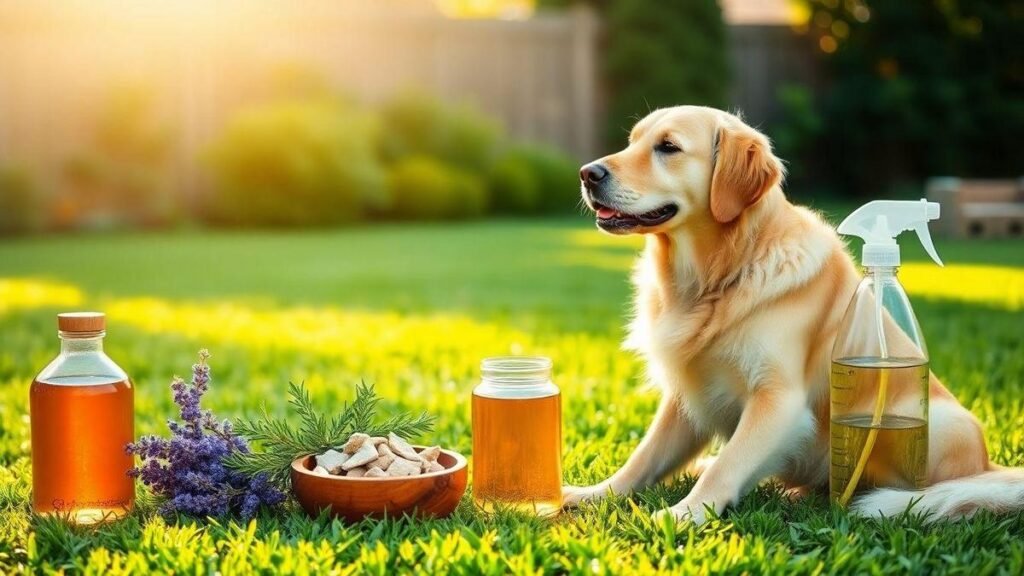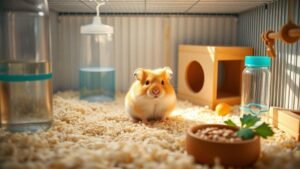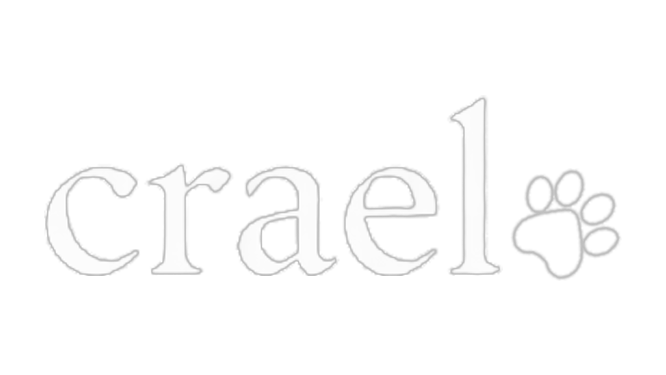Melhores tratamentos naturais para pulgas em cães e gatos
I know how upsetting fleas are. This guide shares my simple, effective routine and safe home remedies—based on real experience and vet advice—to stop infestations: daily checks, gentle baths, regular combing, diluted apple cider vinegar (ACV) for repellent effect, and careful use of food‑grade diatomaceous earth (DE). If you want practical, vet‑backed tips on “Melhores tratamentos naturais para pulgas em cães e gatos”, this is a clear, usable plan. For additional guidance on working with a veterinarian, see how to approach routine vet visits.
Key takeaways
- Comb your pet with a flea comb every day.
- Use a light ACV spray (1:1 water) as a repellent—avoid eyes and open wounds.
- Use food‑grade diatomaceous earth sparingly and safely around the home.
- Wash bedding in hot water and vacuum pet areas frequently; tips for keeping a tidy household with pets are in how to maintain a clean home with pets without stress.
- Always check with your vet before using essential oils or new herbal products.
My daily routine to prevent fleas
I keep the routine short and consistent so fleas don’t gain a foothold.
- Daily: comb with a flea comb (5–10 minutes), inspect skin for flea dirt, live fleas, or red bumps — this fits well with a daily touch‑check routine for dogs.
- 2–3×/week: spray a light mix of apple cider vinegar and water on the coat (avoid face and sores).
- Weekly: wash bedding in hot water; vacuum pet zones and empty the vacuum outside — see additional tips for keeping your pet’s environment clean at how to keep your pet’s environment clean and comfortable.
- Weekly (targeted): lightly dust edges of bedding and dry areas with food‑grade DE; avoid heavy clouds. For safe cleaning and chore practices around pets, check how to keep your pets safe during cleaning and chores.
- As needed: spot treat persistent hot spots with diluted neem oil (vet approval recommended).
Simple checklist
- Flea comb — daily
- ACV spray — 2–3×/week
- DE dusting — weekly (edges only)
- Wash bedding — weekly
- Vacuum pet zones — daily (cleaning tips)
- Yard tidy cedar chips — weekly
How I treat a flea outbreak at home
When I find fleas, I move fast but calmly.
- Gather supplies: flea comb, mild dish soap, towels, shallow bowl of soapy water.
- Do a quick full‑body check: base of tail, belly, behind ears.
- Bathe with mild soap (Dawn is commonly used to drown adults), rinse and dry.
- Comb in sections; dip comb in soapy water to kill removed fleas.
- Vacuum and wash all bedding immediately; empty vacuum outside — for more on keeping bedding and living spaces pet‑friendly, see how to create a pet‑friendly indoor space.
- If fleas persist after a few days or itching is severe, call the vet.
Note: ACV is a repellent, not an egg killer. Combine physical removal, cleaning, and DE or vet‑approved spot treatments to break the life cycle.
Why I use food‑grade diatomaceous earth (DE) — and how I use it safely
I rely on DE because it works mechanically (it dehydrates fleas) and is not a chemical insecticide.
How it works
- DE is tiny fossil particles that abrade the flea’s outer layer, causing dehydration. Best for adults and larvae on dry surfaces; eggs are harder to reach.
Safe application
- Use only food‑grade DE (never pool‑grade).
- Vacuum first.
- Shake a thin layer into carpets, rugs, cracks, and bedding edges. Brush it in.
- Leave 48 hours, then vacuum again and wash bedding.
- Repeat weekly for three weeks to break the life cycle.
Safety rules
- Wear a mask and gloves while applying.
- Keep DE away from your pet’s eyes and nose.
- Avoid heavy dust clouds and do not use on pets with breathing issues.
- Use caution around cats—treat their bedding instead of dusting near them. For practical safety tips during household chores, read how to keep your pets safe during cleaning and chores.
Essential oils — benefits, risks, and dilution guidelines
Essential oils can help when used very cautiously, but many are toxic to pets—especially cats. Learn more about safe choices and limits in how to safely use essential oils around cats and dogs.
Oils I avoid (can be toxic)
- Tea tree, pennyroyal, wintergreen, eucalyptus, peppermint, citrus concentrates.
If a vet approves a safe oil, dilute heavily and patch test first.
General dilution guidance (only if vet OK)
- Small dogs (<10 kg): ~0.25% (often skip)
- Medium (10–25 kg): ~0.5%
- Large (>25 kg): ~1%
Use mild carriers like sweet almond or fractionated coconut oil. Watch for redness, vomiting, lethargy, or breathing changes.
Precautions
- Never apply undiluted oils to skin.
- Keep oils away from face, ears, and paws.
- Use diffusers briefly in rooms pets can leave.
- Call your vet if you’re unsure.
Herbal collars and natural flea shampoos
I favor products with clear ingredients and safety claims.
What I look for in a collar
- Natural actives listed (e.g., geraniol, cedar, neem).
- Adjustable fit and a breakaway feature.
- Duration labeled (8–12 weeks).
- Explicitly marked safe for cats if using in multi‑pet homes.
Shampoo selection and use
- Choose pH‑balanced, mild, and free of harsh insecticides.
- Patch test for 24 hours.
- Rinse thoroughly and don’t bathe too often to protect skin oils.
- Combine shampoo (kills on contact) with a repellent collar for better control.
Always read labels and avoid products containing permethrin or synthetic pyrethroids (toxic to cats). For broader care basics, see the guide to caring for pets.
Protecting puppies and cats in multi‑pet homes
My priority: low‑risk, vet‑approved options for vulnerable pets.
Safe first choices
- Flea comb soapy water — safe for everyone.
- Frequent washing and vacuuming of the environment.
- Food‑grade DE used on household surfaces (avoid direct application to kittens or cats).
- Diluted ACV as a light repellent for dogs only; avoid on cats and near sensitive areas.
- Consult your vet before using neem or any oils.
What I avoid
- Permethrin products on cats (can cause tremors, seizures).
- Essential oils like tea tree or pennyroyal on or near cats.
- Garlic or onion remedies (can be toxic if ingested).
- Dusty applications heavy enough for pets to inhale.
Preparing a safe space for new or vulnerable pets can help — consider tips from how to prepare your home for a new dog or cat.
Working with your vet & emergency steps
Treat your vet as a partner—bring your pet’s weight, age, and medical history. Ask about species safety, ingredient lists, and patch testing. The article on routine vet visits is a useful companion when preparing questions.
Emergency steps if a pet reacts badly
- Remove the product and wash the area with mild soap and water.
- Separate the pet and have the product label ready.
- Call your vet or animal poison control immediately.
- Watch for drooling, vomiting, tremors, breathing trouble, or collapse.
- Transport to the clinic if advised; don’t induce vomiting unless instructed.
Conclusion
My approach to “Melhores tratamentos naturais para pulgas em cães e gatos” is steady and safety‑first: daily flea combing, gentle baths, hot washing of bedding, and targeted food‑grade DE are frontline tools. Use ACV as a light repellent (not a cure). Treat essential oils with respect—dilute heavily or skip unless your vet approves. Small, consistent steps plus prompt vet help when needed stop fleas before they become a major problem.
If you found this useful, see more practical routines at https://blogcraelo.com.
Frequently asked questions
Q: What natural flea treatments can I try right now?
A: Dish soap baths, daily flea combing, diluted ACV spray, thorough cleaning, and light use of food‑grade DE on surfaces. For multi‑pet homes or severe infestations, consult your vet.
Q: Are essential oils safe for dogs?
A: Only some oils, and only heavily diluted with vet approval. Avoid tea tree, pennyroyal, and other known toxic oils. For safe‑use guidance, read how to safely use essential oils around cats and dogs. Never use undiluted oils.
Q: How can I treat my home naturally?
A: Vacuum often, wash bedding in hot water, use DE sparingly on dry surfaces, and keep the yard tidy (cedar chips help). Practical tips for maintaining a clean home with pets are in how to maintain a clean home with pets without stress and how to keep your pet’s environment clean and comfortable.
Q: Will natural methods work fast enough?
A: They help but need daily effort. For heavy infestations, contact your vet for faster, safe solutions.
Q: Can I use natural treatments on puppies or pregnant dogs?
A: Be cautious. Prefer flea combs, gentle baths, and vet‑recommended options. Avoid strong sprays, oils, and unverified remedies. For preparing a safe space, see how to prepare your home for a new dog or cat.






